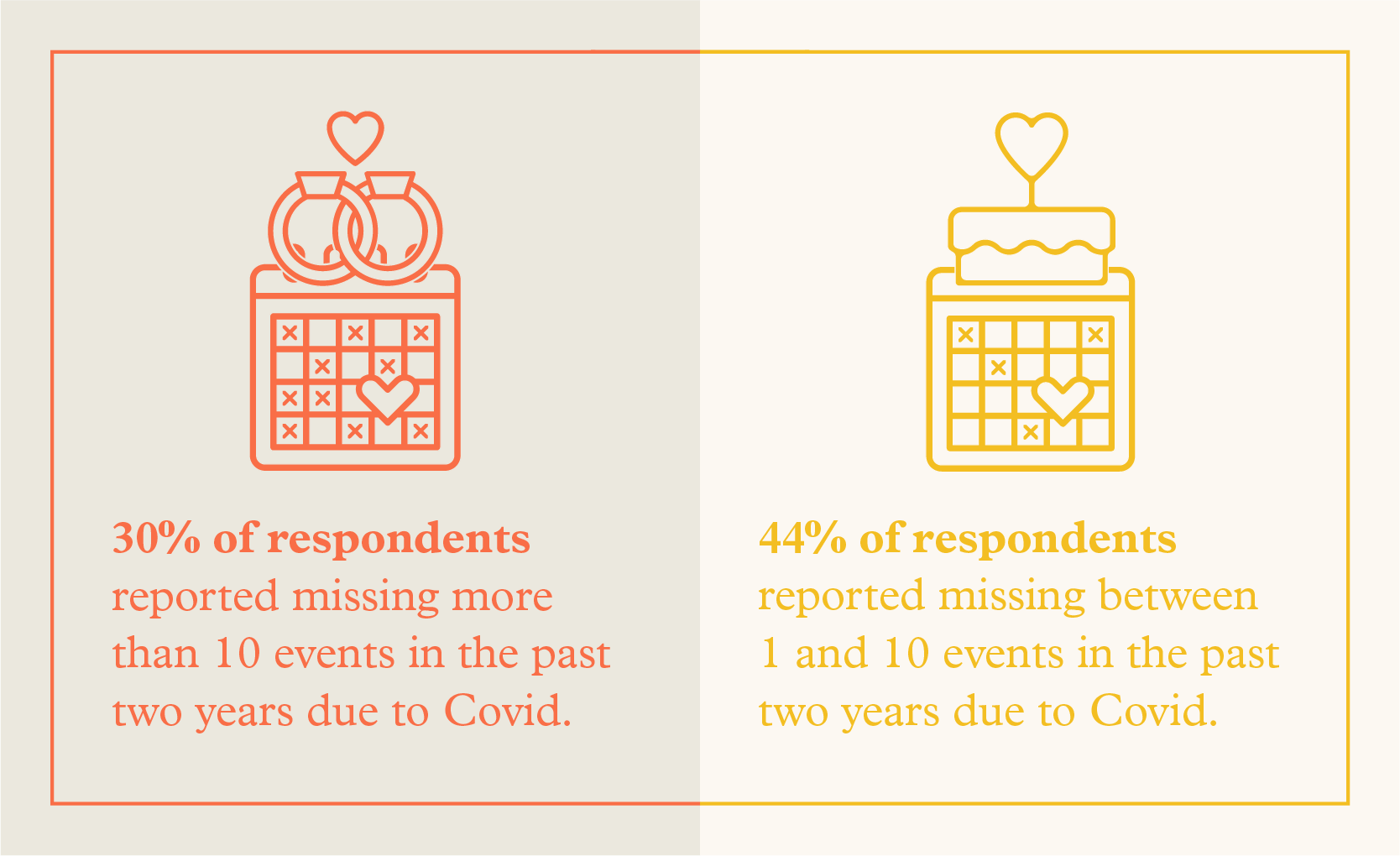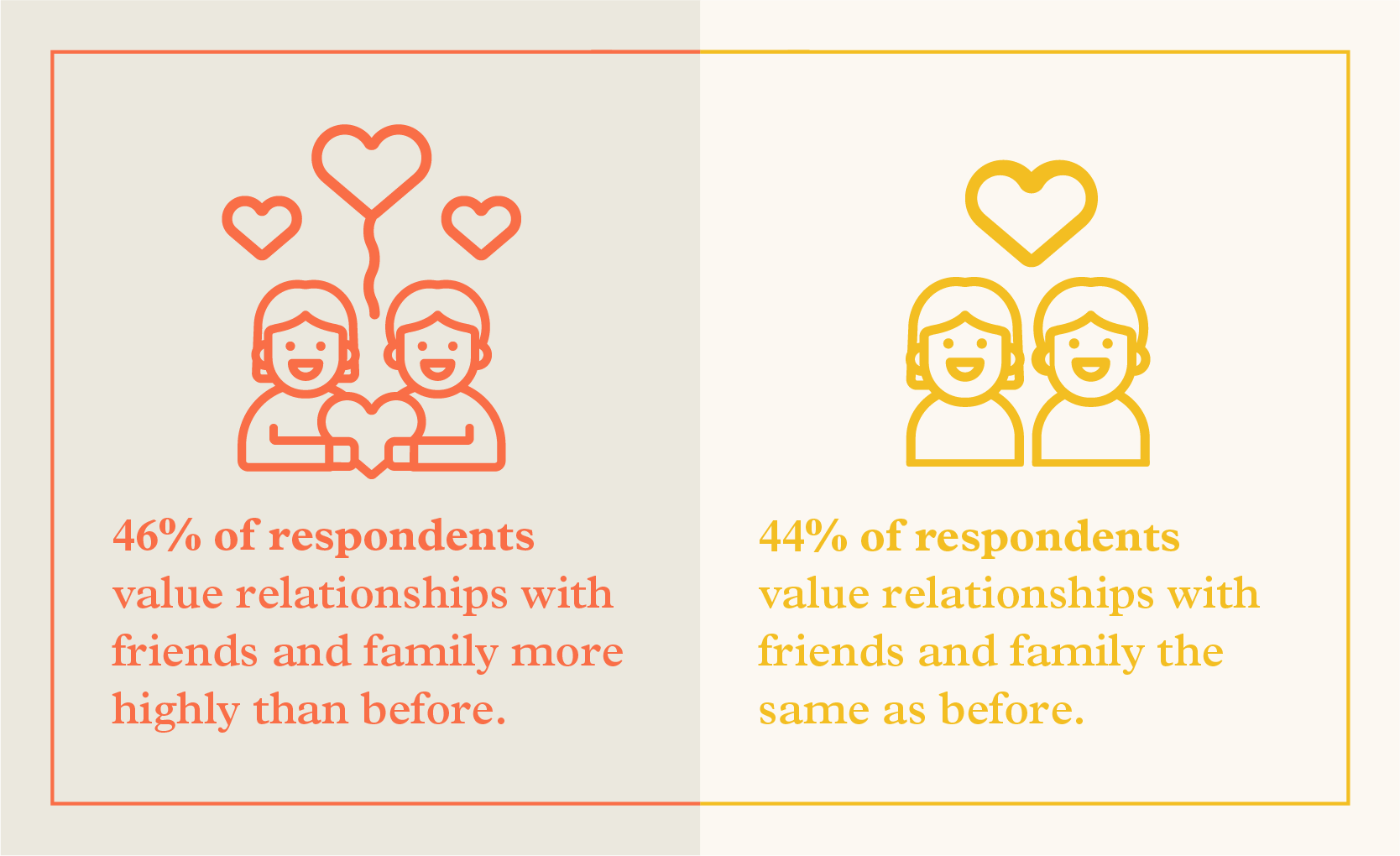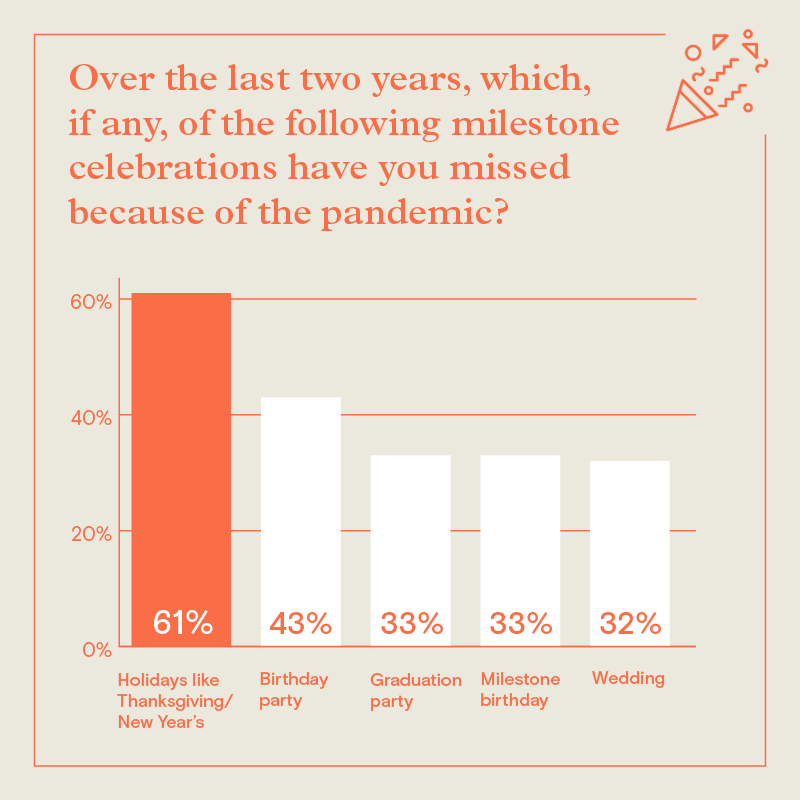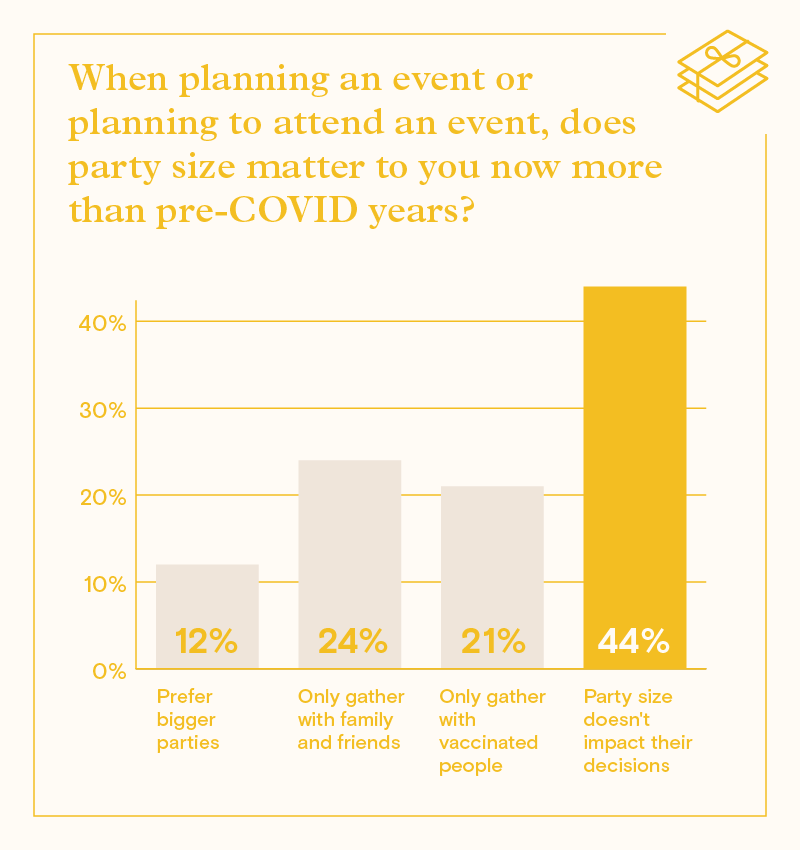Event planning in 2022: The state of parties after Covid

Humans are generally social animals, hard-wired for relationships. So in late 2019 when the novel coronavirus brought lockdowns and restrictions and in-person social gatherings were disallowed, it affected almost everybody.
But as the world adjusts to the new reality of Covid, which changes to how we socialize are here to stay, and which never really changed in the first place?
As event experts ourselves, we at Paperless Post conducted a survey to check the pulse of party culture in 2022.
Table of Contents
Party animals: how social gatherings impact human well-being
Celebrations, social gatherings, and festivities have been around since humans began banding together to build communities. Scientists recognize parties as a type of prosocial behavior—one of the essential practices we use to fortify social bonds.
Throughout history, the ways we celebrate—both traditional (such as Christmas) and new (such as silent discos)—have changed as culture and value systems have shifted. But parties have always centered around the unique, human-specific need to connect.
What drives human connection?
Scientists believe human connection is largely inspired by evolutionary ends: when we deepen social connections, we expand our access to basic resources like food, water, and safety.
What’s more, people possess the ability to create kin far beyond their genetic network. Breaking bread, telling stories, and spending time together helps us broaden our bonds beyond friends and family to include people outside our own biological families.
Why are social gatherings important?
Anyone who’s experienced a riveting conversation, a belly laugh, or the rush of sharing an experience with a stranger knows that social gatherings simply feel good.
But beyond pure pleasure, parties have certain essential purposes:
— Parties help us bond: Social gatherings enable intimacy, fortifying bonds with our loved ones while enabling us to build our group of friends. Even in a room full of new faces, having a shared occasion to celebrate can lay the groundwork for trust.
— They’re critical for our development: Parties are key during adolescence, one of life’s most transformative periods. Teens craving parties do so for a good evolutionary reason. Adolescence is a pivotal stage of identity development, and social gatherings are an opportunity for self-discovery.
— Celebrations help us mark time: Parties aren’t just a “moment” in time—they actively help us shape time and memorialize its passage. Both large celebrations like Diwali and close-knit engagement parties encourage us to transition gracefully between pivotal chapters in our lives.
Are parties important for well-being?
A tide of new research suggests that parties and social gatherings are not frivolous at all—in fact, they’re a determining factor for both mental and physical health. A few ways in which our wellbeing is increased through parties are:
— Lifespan: Sustained loneliness elevates our risk of developing physical conditions like heart disease and cancer. Research suggests that a fractured sense of connection may be as hazardous to human health as a long-term illness, and it can truncate our lives almost as much as smoking.
— Mental health: When we socialize, the pituitary gland releases endorphins—a hormone responsible for our sense of pleasure and belonging. Not only does connection elevate our moods, it also minimizes our sense of pain—physical and psychological. According to one study, participating in social gatherings significantly curbs our risk of developing depression.
— Sense of fulfillment: Happiness revolves around maintaining and nurturing our relationships. Even if we’re in a sour mood, being around friends can have a positive effect on us. Scientists refer to this as the mirror effect—a phenomenon wherein humans are psychologically primed to mimic the emotional tenor and cues of others. Parties are an opportunity to lift one another’s spirits, restoring emotional baselines and reminding us of the value of the people we care about.
So how do the global pandemic and social distancing guidelines affect party-goers’ well-being? We got the facts on how party-goers plan to connect now that they’ve lived through Covid.
How parties have changed since coronavirus
We can all agree that the coronavirus pandemic has had seismic repercussions on the ways we relate to one another. But how have those repercussions reverberated, and what will our celebrations look like going forward?
In total, we surveyed 420 respondents to see how their party habits have changed (or not) due to the coronavirus pandemic. Let’s review some key trends.
To start, here are a few stats we gathered from our survey:
— 41% of people say in-person events are always better than digital alternatives
— 35% say they’ve never attended a virtual party
— 48% say they feel the same about large parties as they did pre-pandemic
— 44% report their approach to party planning hasn’t changed
Result #1: Social events canceled or postponed due to Covid-19
The coronavirus pandemic resulted in some significant reductions to our social agendas.
When asked how many social events or parties were missed due to cancellation or postponements, our respondents reported the following:

Result #2: How Covid has changed our relationships
Our respondents expressed that one silver lining to living through a global pandemic was walking away with a new perspective on relationships. In fact, 46% of respondents say they value their friends and family more than they did pre-Covid.

Result #3: Major events changed or missed due to Covid-19
From Zoom-only graduations to double-canceled weddings, Covid disrupted key milestone celebrations that many had either looked forward to for years, or that were beloved yearly traditions.
Here’s what respondents had to say about the major events they missed due to Covid:

Missing in-person gathering for life’s valued moments was a painful side effect of the pandemic.
Result #4: How social events will look in 2022 and beyond
For many, Covid altered the ways we connect to one another, from limiting hugs and kisses with acquaintances to limiting the overall number of people we socialize with.
Here’s how party size will affect many people’s decisions to socialize moving forward:

Most of us reduced our social circles during lockdown, but our survey predicts that not everyone will stick to these smaller groups moving forward. While the Covid-conscious will continue to see just their nearest and dearest, others crave the experience of creating common bonds with new people.
Result #5: How event planning will change post-Covid
There are a million tiny details that go into planning a party, and with the advent of Covid, our approaches to them have changed. Here’s what respondents say they’ll be doing differently when it comes to hosting parties:
— 37% will invite fewer guests while 9% plan to invite more guests
— 31% will send online-only invitations while 7% are less likely to send an online invitation
— 2% plan to be more cautious or hold events outdoors
— 4% won’t be doing anything differently
In total, our survey results paint a varied portrait of life after coronavirus. Some are eager to get back in their groove, trying out post-pandemic party ideas like soirées and reunions with decades-old friends. Others will continue to keep their circles close-knit, and exercise caution by paring down their guest lists.
3 ways Paperless Post helps you host with confidence
The post-pandemic world will be a more hybrid one: while we’ll continue to throw in-person social occasions, most IRL celebrations (whether a corporate event or a private one) will be enabled by virtual capabilities. There are several ways to use digital tools:
— Sending digital invitations – Digital invitations are one effective way to plan parties with flexibility and account for health and safety concerns or anything else that comes your way. What’s more, they are far more affordably priced than traditional print invitations, which can cost up to thousands of dollars depending on the event type, design, and number of guests.
— Setting the tone for your party – Digital invitations (versus just an email or text) are an event’s first impression to guests, they express what to expect from the party. When you choose among Paperless Post’s thousands of best-in-class designs, you’ll add a glimpse of the overall party experience you plan to offer.
— Creating cohesive themes – You can choose a themed digital invitation from Paperless Post and even find matching decor (organized by theme) at the Paperless Post Party Shop.
Get back to parties with Paperless Post
Make your re-emergence to socializing unforgettable with Paperless Post invitations and party supplies. Our affordable, eye-catching designs deliver the best first impression to guests, while simplifying things for you–-no address-scrounging, trips to the store, postage, or the hassle of tallying responses. Plan your next party today with Paperless Post!